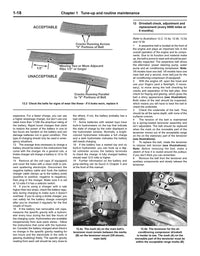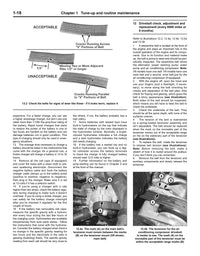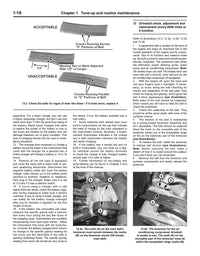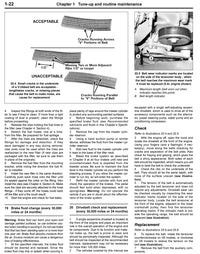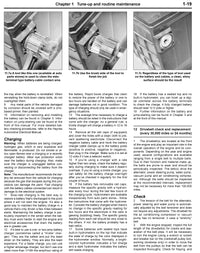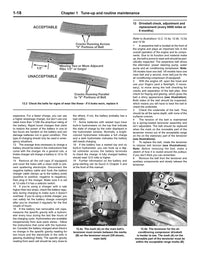Your car’s temperature gauge is like a goalkeeper – you don’t really notice it much until something goes wrong. But when something is amiss, and the temperature gauge starts heading towards the red zone, then it consumes pretty much all of your attention, because any issue has the potential to be very costly indeed.
There’s a multitude of glitches that can cause your engine to overheat – from a coolant leak to a water pump failure, with everything in between, so you’ll need to investigate thoroughly. That’s why we’ve put together this guide on car overheating causes, and can show you to your vehicle’s Haynes manual, where you can learn how to fix an overheating engine.

1 Coolant leak
Coolant is liquid, so is predisposed to find even the most minuscule hole in your cooling system and deposit itself all over the road. The hole through which it exits the engine might be only tiny, but because the system tend to operate under pressure, the coolant will soon be forced out. And of course, it’ll happen at precisely the most inconvenient moment.
So, if you happen to notice a puddle under your car, it’s worth inspecting all the hoses and joins to make sure nothing untoward is occurring. Coolant hoses deteriorate as they get older, so make sure a vital hose hasn’t perished.

2 Damaged radiator
The radiator sits right at the front of the car, so can be vulnerable to debris thrown up by other vehicles. This is A Bad Thing because the coolant travels through pipes between all the tiny fins in the radiator, and gets cooled by the airflow. However, if these fins have been bent by being hit by debris, then the flow of vital cooling air will be restricted. This can cause the temperature of the coolant to increase, at which point you’re faced with an overheating situation.
To remedy the situation, you should try to gently straighten out the fins using thin-nosed pliers or a flat screwdriver, always taking care not to snap any fins off in the process.

3 Radiator fan failure
If your car’s radiator fan has failed, then your radiator won’t get any cooling air when you’re sitting in traffic, so overheating is almost inevitable. A fan can fail in a number of ways, so you’ll need to be methodical when you check.
Firstly, try to turn the fan using a stick or a screwdriver (don’t use your hand in case the fan suddenly spins and injures you). It can sit idle during winter months, when it’s regularly doused in salt and water, which can cause it to seize up. If it’s seized, it won’t move.
Next. Check your Haynes manual to see which fuse controls the fan, and inspect it to make sure it hasn’t blown. If it has, replace it, and then you’ll need to find the issue that caused the fuse to blow in the first place.

4 Faulty thermostat
So a check under the bonnet has raised a big question: “why is my car overheating but has plenty of coolant”?
The issue could be the thermostat.
The thermostat is a valve that opens and shuts to control the flow of coolant between the radiator and the vehicle’s engine, and in doing so it regulates the coolant temperature. When cold, the thermostat remains closed to prevent coolant flowing to the car’s radiator. It then opens up when the coolant reaches a specific temperature, to allow the radiator airflow to keep the coolant at the correct temperature.
If the thermostat has failed and therefore doesn’t open, or doesn’t open as much as it should, then the engine will quickly overheat. Thankfully, the procedure to replace the thermostat is contained in every Haynes manual.

5 Broken water pump
In the same way as your heart pumps your blood around your body to keep everything working as it should, so your car’s coolant is pumped around the cooling system by a water pump. And if the water pump fails, then the coolant won’t flow through the radiator, and will very rapidly become too hot.
Signs of a damaged water pump include overheating, whining and grinding noises and coolant leaks.
If this is what is afflicting your vehicle, then you need to study your Haynes manual, and follow the procedure to replace the pump right away.

6 Check the oil
If your car is starting to overheat, but the coolant level appears normal, and there are no puddles forming underneath the vehicle, then the problem might not lie within the cooling system after all.
When was the last time you checked your vehicle’s oil? Oil lubricates all of the moving parts inside the engine, and indeed, a microscopically thin layer of oil keeps fast-moving components separate, and stops them rubbing together.
However, if the oil level is low there’s less to go around, and what oil there is will get too hot itself, rendering it less effective and causing the engine components to heat up. It’s a vicious cycle.








